Just as the American flag symbolizes unity and pride, Tommy Hilfiger embodies a unique intersection of style and cultural evolution. You might wonder how a brand that started in the 1980s has managed to stay relevant in today's fashion landscape. It's not just about clothing; it's a narrative that intertwines quality, inclusivity, and social responsibility. What does this mean for you as a consumer and for the fashion industry at large? The answers might challenge your perceptions and reveal a deeper significance behind the label.
Brand Overview
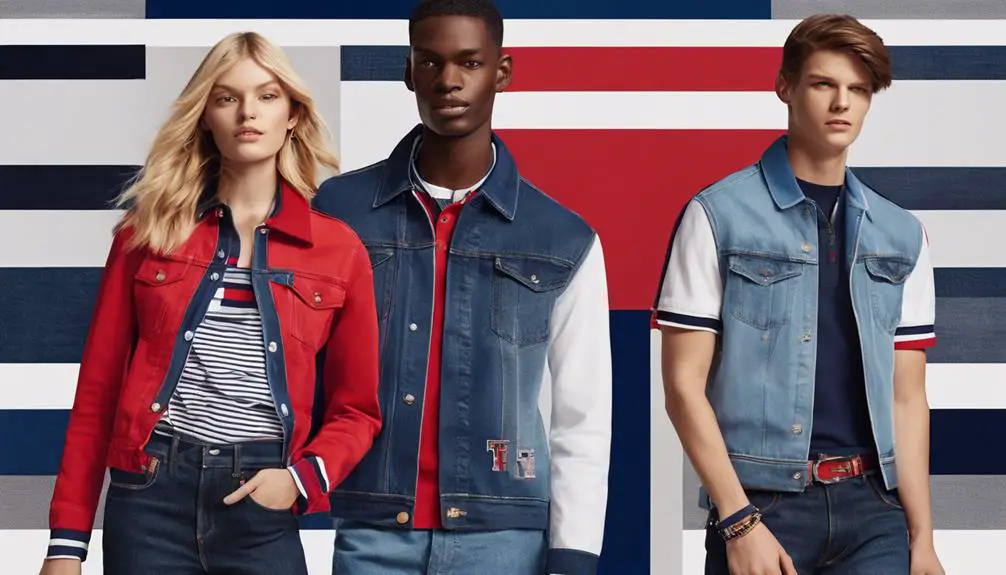
Tommy Hilfiger, a brand born from a vision of classic American style, has become synonymous with preppy fashion since its founding in 1985. This iconic brand has carved a niche for itself in the competitive world of fashion, offering an extensive array of product lines that include menswear, womenswear, children's clothing, and various licensed products.
With a focus on the preppy aesthetic, Tommy Hilfiger effortlessly combines casual elegance with a sporty vibe, appealing to a wide demographic. The brand's evolution reflects its cultural impact, particularly during the 1990s, where collaborations with the music industry greatly boosted its visibility and popularity in the fashion landscape.
Operating in over 100 countries, the brand has enjoyed remarkable success, with global retail sales reaching approximately $9.1 billion in 2022. This achievement underscores the brand's ability to resonate with consumers around the world.
The signature red, white, and blue logo not only reflects its American roots but also encapsulates the brand's commitment to quality and style. It serves as a visual representation of the classic American style that Tommy Hilfiger champions.
As you explore the diverse product lines, you'll discover that the brand emphasizes high-quality materials and timeless designs, ensuring that each piece stands out. From tailored suits to everyday casual wear, Tommy Hilfiger has something for everyone.
Logo Significance
The logo of Tommy Hilfiger plays a significant role in conveying the brand's identity and values. With its striking combination of two blue rectangular bars, a white rectangle, and a red rectangle, the logo symbolizes the letter 'H' while drawing inspiration from nautical flags. This clever design choice not only reflects Hilfiger's American heritage but also connects to maritime themes, reinforcing the essence of a quintessentially American label.
The colors used in the logo—dark sapphire blue and crimson red—further enhance its symbolism, evoking a sense of patriotism and authenticity. Since its inception, the logo has maintained brand consistency, which has been essential in establishing strong recognition within the fashion industry. Its simplicity and geometric design contribute to its memorability, making it easily identifiable among consumers.
Moreover, the logo's versatility shines through in variations that include symbol-only designs and full brand name arrangements. This flexibility maintains a strong visual identity across different product lines, ensuring that whether you're eyeing a casual tee or a polished jacket, the essence of Hilfiger remains intact.
In essence, the Tommy Hilfiger logo is more than just a visual element; it embodies the brand's core values, aesthetics, and narrative. Its thoughtful design fosters brand recognition, making it a powerful symbol of American style and culture that resonates with consumers worldwide.
Cultural Impact
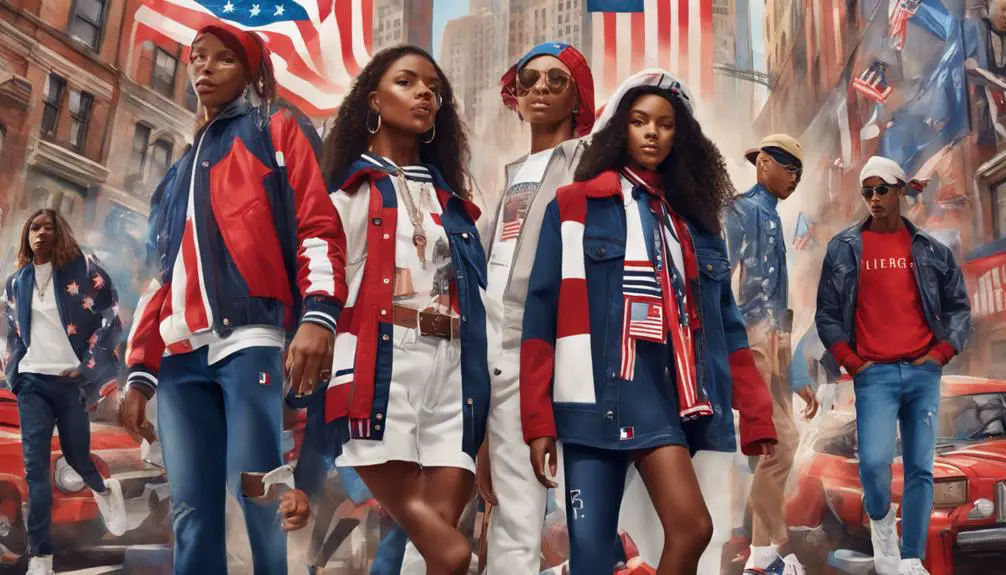
Fashion enthusiasts and cultural observers alike recognize the profound impact Tommy Hilfiger has had on style and identity over the decades. Emerging in the 1990s, Tommy Hilfiger's brand became synonymous with the preppy aesthetic, capturing the essence of classic American style. This appeal was amplified through its collaborations with hip-hop culture, featuring iconic artists like Aaliyah and Pharrell Williams.
These partnerships created a unique fusion of styles, bridging the gap between urban streetwear and preppy vibes, making the brand a cultural icon. The brand's strategic marketing campaigns, such as the memorable 1985 Times Square billboard campaign, also played a pivotal role in establishing its identity.
The brand's iconic red, white, and blue logo not only reflects American heritage but also signifies an aspirational lifestyle that resonates with many. Hilfiger's marketing strategies, emphasizing celebrity endorsements, have kept the brand relevant in the ever-evolving fashion industry. The notable TommyXGigi collection with Gigi Hadid is just one example of how these collaborations enhance Tommy Hilfiger's visibility and cultural relevance.
Moreover, the brand's commitment to diversity in advertising campaigns is commendable. By featuring models of various ethnicities and body types, Tommy Hilfiger advocates for a more inclusive representation in the fashion industry. This dedication not only reflects societal changes but also encourages others to embrace diversity.
Through these multifaceted approaches, Tommy Hilfiger has solidified its position as a cultural icon, effectively intertwining fashion with the dynamic world of pop culture, and inspiring generations to celebrate style, individuality, and inclusivity.
Business Philosophy
Recognized not just for its cultural impact, Tommy Hilfiger's business philosophy embodies a seamless blend of classic American style with modern inclusivity. This approach aims to resonate with diverse consumer identities, celebrating self-expression through clothing that's both stylish and representative. By incorporating contemporary influences, Hilfiger creates fashion that feels fresh and relevant, appealing to a wide audience.
A significant part of this philosophy is the brand's savvy use of celebrity collaborations. Partnering with well-known figures in music and entertainment not only boosts visibility but also connects with youth culture, showcasing Hilfiger's belief in the importance of cultural relevance. This strategy helps to keep the brand at the forefront of fashion trends while fostering a sense of community among fans.
Sustainability is another cornerstone of Hilfiger's business philosophy. The brand is committed to reducing its environmental impact by using sustainable materials and enhancing transparency in its supply chain. This dedication to sustainability reflects a growing awareness of the need for responsible fashion.
Inclusivity shines through in Hilfiger's diverse product lines and marketing campaigns, ensuring that fashion feels accessible to everyone. Whether you're looking for classic pieces or trendy outfits, there's something for all styles and sizes.
Through this innovative blend of elements, Tommy Hilfiger's business philosophy not only drives commercial success but also aligns with social responsibility, ultimately promoting community development and a brighter future for everyone involved in the brand.
Philanthropic Efforts

Tommy Hilfiger's philanthropic efforts reflect a deep commitment to making a positive impact on communities and youth. In 1995, he established The Tommy Hilfiger Corporate Foundation, now known as TommyCares, with a clear focus on community support initiatives that empower the next generation. His brand has generously contributed to various charities, including Breast Health International and Millennium Promise, which work tirelessly toward health awareness and poverty alleviation.
Through these philanthropic efforts, Tommy Hilfiger emphasizes the importance of diversity and inclusion, ensuring that all voices are heard and valued. His dedication to social responsibility extends globally, as he collaborates with organizations like Save the Children and the World Wildlife Fund (WWF) to tackle pressing social and environmental challenges.
In recognition of his outstanding contributions, Tommy Hilfiger was honored with the Geoffrey Beene Lifetime Achievement Award by the Council of Fashion Designers of America in 2012. This prestigious accolade highlights how his philanthropic initiatives haven't only made a significant impact but also inspired others in the fashion industry to follow suit.
Ultimately, Tommy Hilfiger's philanthropic efforts embody a vision for a better world, one where community support and social justice go hand in hand. By actively engaging with various global initiatives, he encourages individuals and organizations alike to join in the fight for a brighter future, proving that fashion can indeed be a powerful vehicle for change.
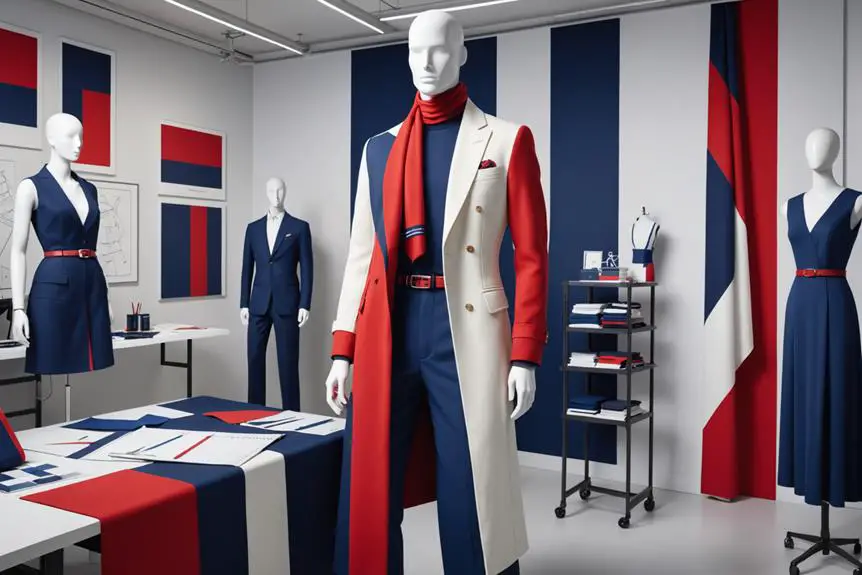


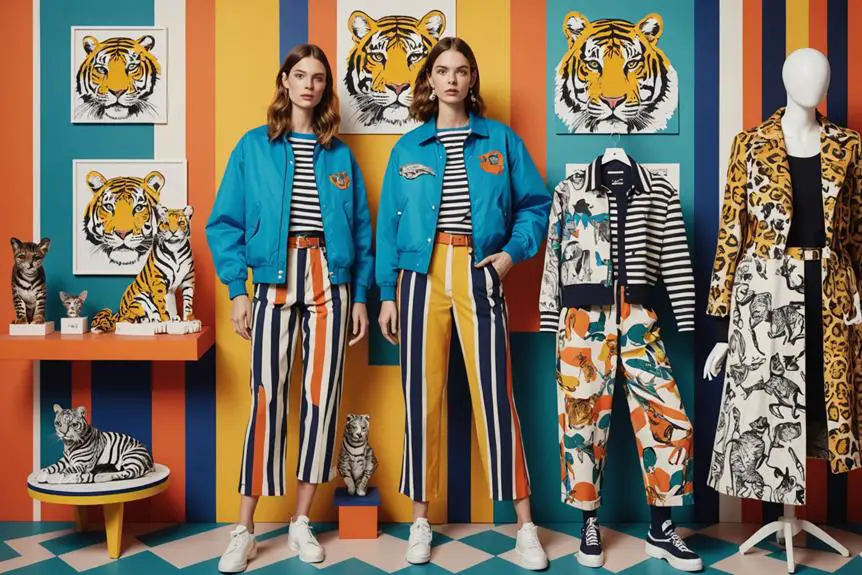
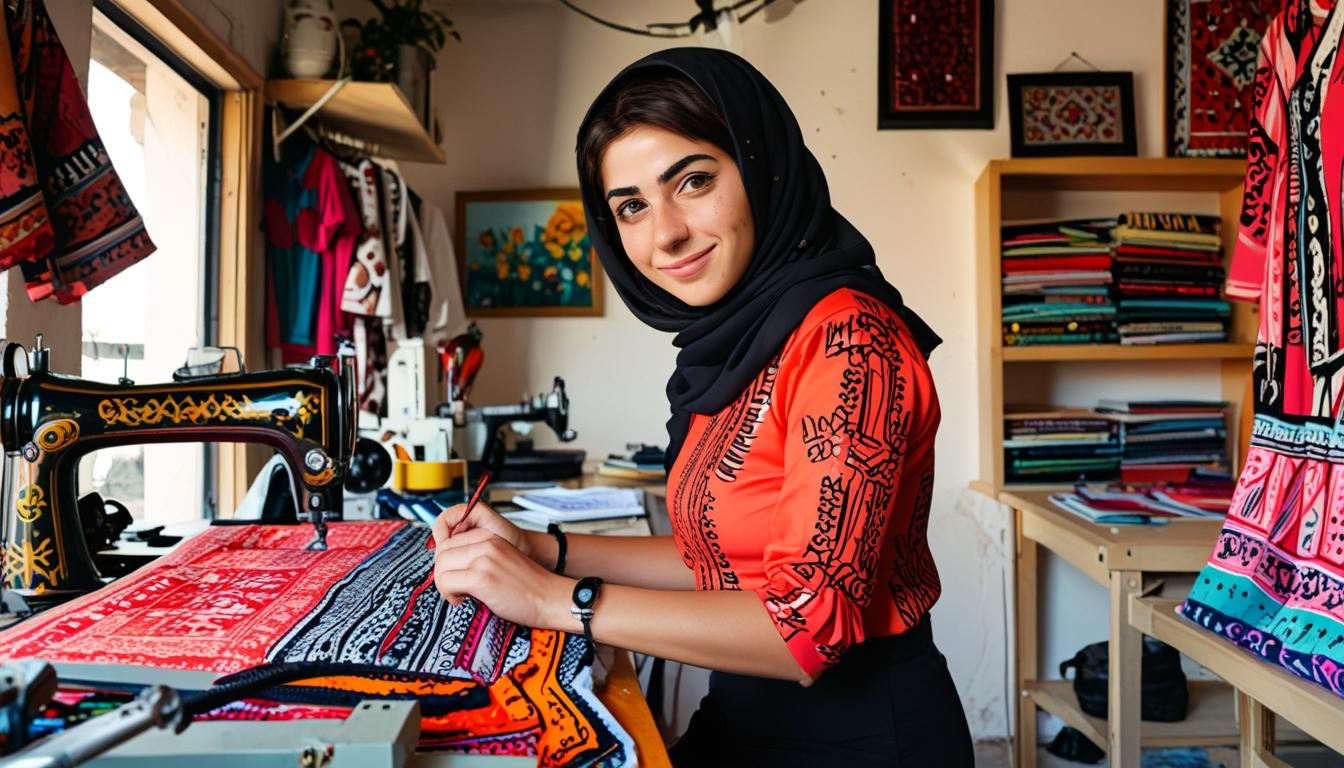
I agree with your points, superb post.